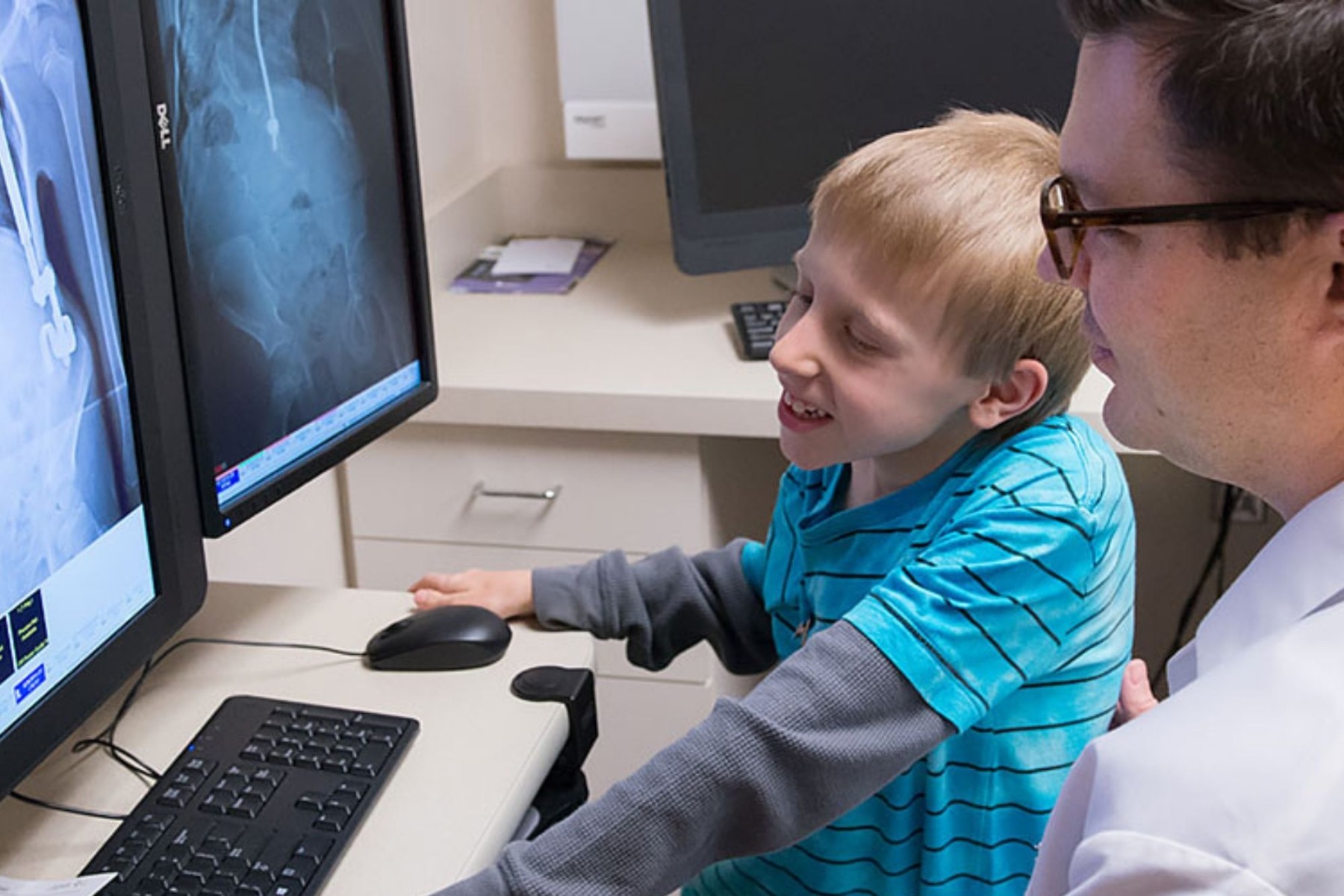Most patients with mild scoliosis at skeletal maturity (when the spine is no longer growing) will lead a normal life with no limitations on activities, including sports. However, for patients with a more significant curvature of the spine, there is a higher likelihood that the curve will continue to progress throughout adulthood. Although it will progress slowly (0.5-1 degree per year), throughout a lifetime this can add up to a significant curve which can be more difficult to correct and have a negative impact on quality of life. Options for how to manage your scoliosis depend on your curve size and how much growing you have left.
How is pediatric scoliosis diagnosed?
Historically, scoliosis checks were performed routinely in schools by a school nurse. This is no longer the case. Your pediatrician should be evaluating your child’s back with a forward bend exam at every yearly well child check beginning at age 8 years. And continuing until they have finished growing.
Gillette Children’s offers comprehensive scoliosis evaluations, treatments and services for all ages—from infants to adults. At Gillette, you’ll work with leading pediatric experts in treating scoliosis.
Imaging
A very important piece of managing your scoliosis curve is being able to accurately measure the curve and see how it’s changing. Getting an x-ray of your spine is the best way to do this. Some of our clinics have a special x-ray machine called EOS. The EOS Imaging System is a unique system that captures the x-ray while you’re sitting or standing up; and uses an ultra-low dose of radiation. It provides a detailed image so we can make more in-formed diagnoses and create an individualized treatment plan. Reducing radiation is particularly beneficial for children who need to be imaged frequently, such as those with spinal conditions like scoliosis. Your provider may want an MRI of the spine if there is concern for other causes of scoliosis. An MRI does not use any radiation but takes up to one hour and requires the patient to lay very still. Because of this, some patients may need medicine to make them sleepy and remain still for the MRI. This is discussed on a case-by-case basis.
Monitoring Your Growth
We will measure your height at each visit. This lets us calculate how fast you’ve grown between visits, or your rate of growth. Knowing where you are on the rate of growth curve helps us to make the best decision for managing your specific curve. There are multiple clues on your x-ray that help your provider determine how much growth you have left. We can use growth plates in your hand bones, upper arm bone, and pelvic bone to get more information on your skeletal maturity. The glossary on page 16 has great definitions of common medical words your provider might use when explaining your x-ray to you. Appendix A has examples of these markers of skeletal maturity. For girls, knowing when you started, or that you haven’t started yet, your first menstrual period also helps your provider determine how much growing you have left and how this could affect your curve. Girls typically grow for 1.5 - 2 years after they first begin their period.
Clinical Photos
We’ve talked a lot about x-rays and looking at the bones of your spine. But what you look like as an entire person is just as, if not more, important. In order to keep track of your posture, shoulder heights, waist appearance - and how your scoliosis and treatment is influencing these - your provider may ask to take photos of your back. We may take one photo of your back, one photo from the side, and one of your back with you bending forward to touch your toes. In order to have the most accurate photos, we need a picture of your bare back. For females, wearing a sports bra will keep you covered but allow us to see your back. Please plan ahead, and wear or bring a sports bra to your spine appointment.
 Home Page
Home Page

